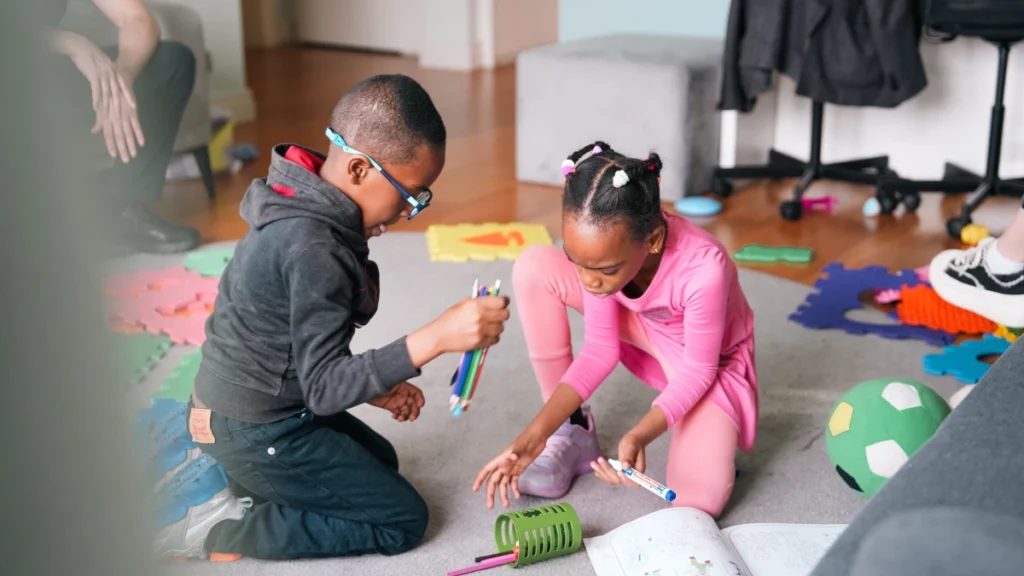Airports, security lines, and crowded cabins can be overwhelming for anyone—but especially for children with autism. The sensory load, unpredictability, and rigid rules of air travel can quickly escalate into meltdowns or distress.
While flying with an autistic child will likely never be 100% smooth, preparation makes a huge difference. This blog shares realistic, experience-based tips that have helped many families reduce stress while flying. These are not medical recommendations, but strategies collected from caregivers, therapists, and lived experiences. Always adapt based on your child’s needs and consult your care team for personalized guidance.
Table of Contents
1. Start Preparing Early—with Stories & Visuals
Children on the autism spectrum often do better when they know what to expect. Use:
- Social stories (simple illustrated guides explaining what happens at the airport),
- YouTube videos of airport walkthroughs,
- Photos of the actual aircraft or cabin interior.
Bonus tip: Walk through the journey step by step during playtime. Use a toy airplane or draw a sequence chart.
2. Pack Sensory Essentials in a “Comfort Bag”
Bring a carry-on filled with items that calm or distract your child:
- Noise-canceling headphones,
- Sunglasses or a hat (for harsh lights),
- Fidget toys or chewable jewelry,
- A favorite snack, blanket, or comfort object.
Label the bag clearly and keep it under the seat—not in the overhead bin.
3. Choose Flight Times That Match Your Child’s Rhythm
If your child is calmer in the morning, book an early flight. If they nap in the afternoon, aim for that slot. Avoid layovers if possible; direct flights reduce the total number of transitions.
4. Use Disability Notification Services
Some airlines offer special assistance if notified in advance. This may include:
- Pre-boarding,
- Priority check-in,
- Seating accommodations.
Look for programs like:
- TSA Cares (U.S. airports),
- Sunflower Lanyard Program (UK & some EU airports),
- Hidden Disabilities Support at select airports.
Always call ahead—these services are not always visible during online check-ins.
5. Practice Airport Visits (If Possible)
Some airports offer “mock travel days” for neurodivergent travelers. Even a short visit to walk near check-in counters or security lines can reduce anxiety on the actual travel day.

6. Create a Travel Routine
Use a visual checklist for the airport day:
- Wake up → Dress → Taxi → Security → Wait → Board → Seat → Snack
This reduces the unknown and helps your child understand what comes next.
7. Brief the Crew (Quietly and Briefly)
Once boarded, you can discreetly inform a flight attendant:
“Hi, just so you’re aware, my child is autistic and may need a little space or support during the flight.”
You’re not asking for special treatment—just creating understanding.
8. Download Offline Entertainment
Wi-Fi may not always work on flights. Have downloaded:
- Short cartoons or games your child knows,
- Visual timers or calming apps like “Breathe+” or “Tappy.”
Make sure devices are fully charged, and bring backup power banks.
9. Expect Meltdowns—and Have a Plan
Even with perfect prep, things may go wrong. Prepare a calm-down strategy:
- An agreed-upon phrase to signal overwhelm (“I need a break”),
- A quiet story or song,
- An “escape card” for temporary withdrawal (even just putting on headphones and turning away).
You’re not failing. You’re supporting.
10. Be Kind to Yourself
You’re doing something hard. Not everyone will understand, but that doesn’t mean you’re doing it wrong. Prepare, breathe, and take one moment at a time. You deserve support as much as your child does.
Q&A Section
Can I request pre-boarding as a parent of a child with autism?
Many airlines allow this if notified in advance. Check their “special assistance” page or call their customer line.
What if my child has a meltdown mid-flight?
You can try noise-reduction tools, calm-down visuals, or sensory items. Informing the crew early helps reduce tension.
Are there autism-specific airport programs?
Yes—some major airports offer trial runs, sensory-friendly spaces, or priority lanes for hidden disabilities.
Do I need medical documentation to request assistance?
Sometimes yes, especially for international travel. Check the airline’s policy and prepare early.

